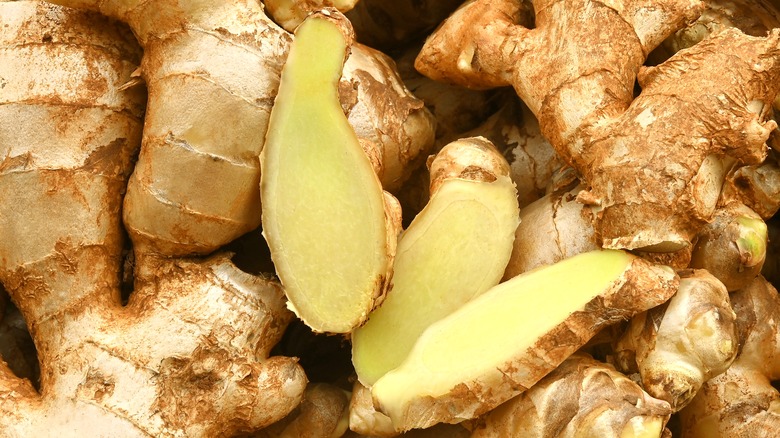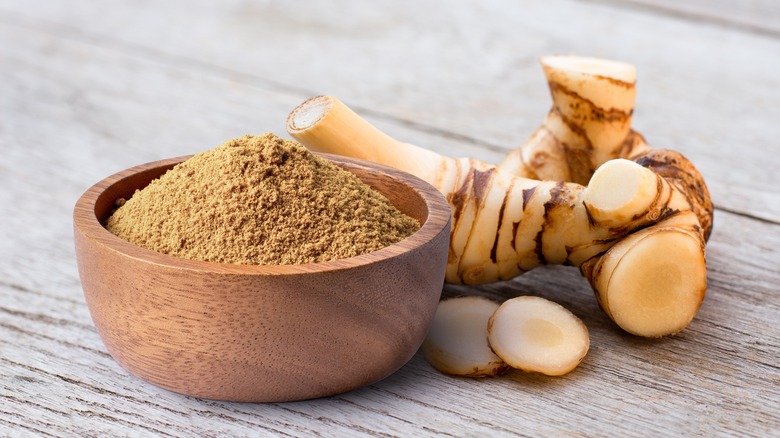Galangal Vs. Ginger: How Are They Different?
We may receive a commission on purchases made from links.
If you've ever picked out a Thai recipe, you may have noticed galangal on the ingredient list. More often than not, the recipe will offer no substitute for the item, despite the existence of its similar-looking and more widely available cousin, ginger. That's because galangal and ginger, though similar in some ways, are also very different and should not be used interchangeably.
Galangal and ginger belong to the same family of tubers known as Zingiberaceae, along with other roots like turmeric, per MasterClass. While ginger transcends almost all culinary borders, galangal is mostly popular in Southeast Asian cooking like Thai, Malaysian, and Indonesian cuisines, which is why it's also known as Thai ginger or Siamese ginger.
As for flavor, ginger's warming, spicy-sweet notes make it suitable for both savory dishes and desserts like gingerbread cookies. Galangal, meanwhile, has an earthier, more citrusy taste that's zingier, more astringent, and best when used with other fresh aromatics to make boldly flavored curries, soups, and more (via Spicetutor).
It can be tricky to use ginger and galangal as substitutes for each other
YouTuber East Meets Kitchen finds that the differences between ginger and galangal begin even before you taste them. While ginger's skin is soft enough to be scraped off with a spoon, galangal's tough texture makes it harder to work with — even when using a vegetable peeler. The channel goes on to compare the strong piney smell of galangal to that of Vicks VapoRub.
Although ginger and galangal are often thought of interchangeably, the differences in both their texture and flavor indicate otherwise. Spicetutor suggests that if you find yourself in a situation that calls for ginger but only have galangal in your pantry, it's better to forgo the ginger entirely than risk substituting it with its sharper cousin. If you absolutely must use the galangal as a substitute, the site recommends decreasing its quantity by at least a quarter.
Cook's Illustrated also finds that it's much trickier to substitute ginger for galangal than the other way around. In desserts, ginger's subtle sweetness is far too mellow for the bitter and punchy galangal to replicate. Galangal, on the other hand, is typically used in combination with other herbs, spices, and plants, making it easier to replace with ginger when necessary. Make the swap if you must, but if you're whipping up tom kha gai soup where galangal is a star ingredient, do your best to track down the right root.

